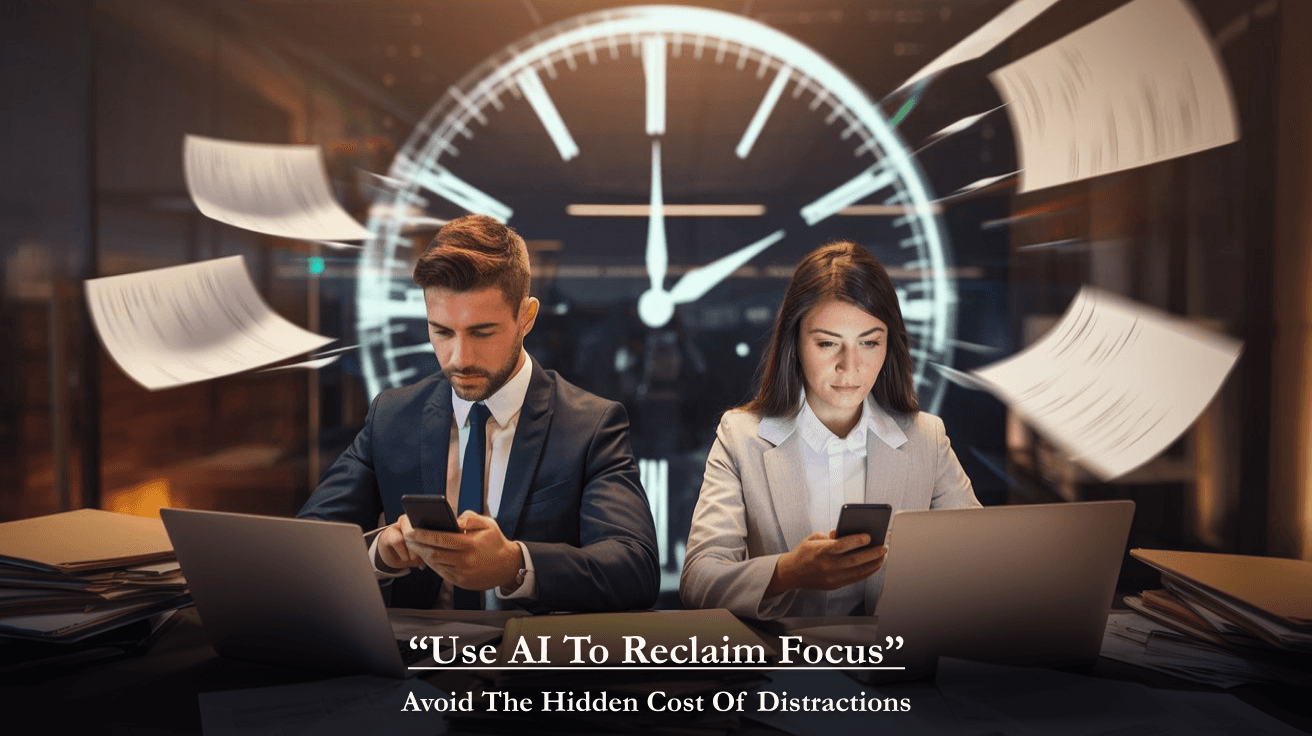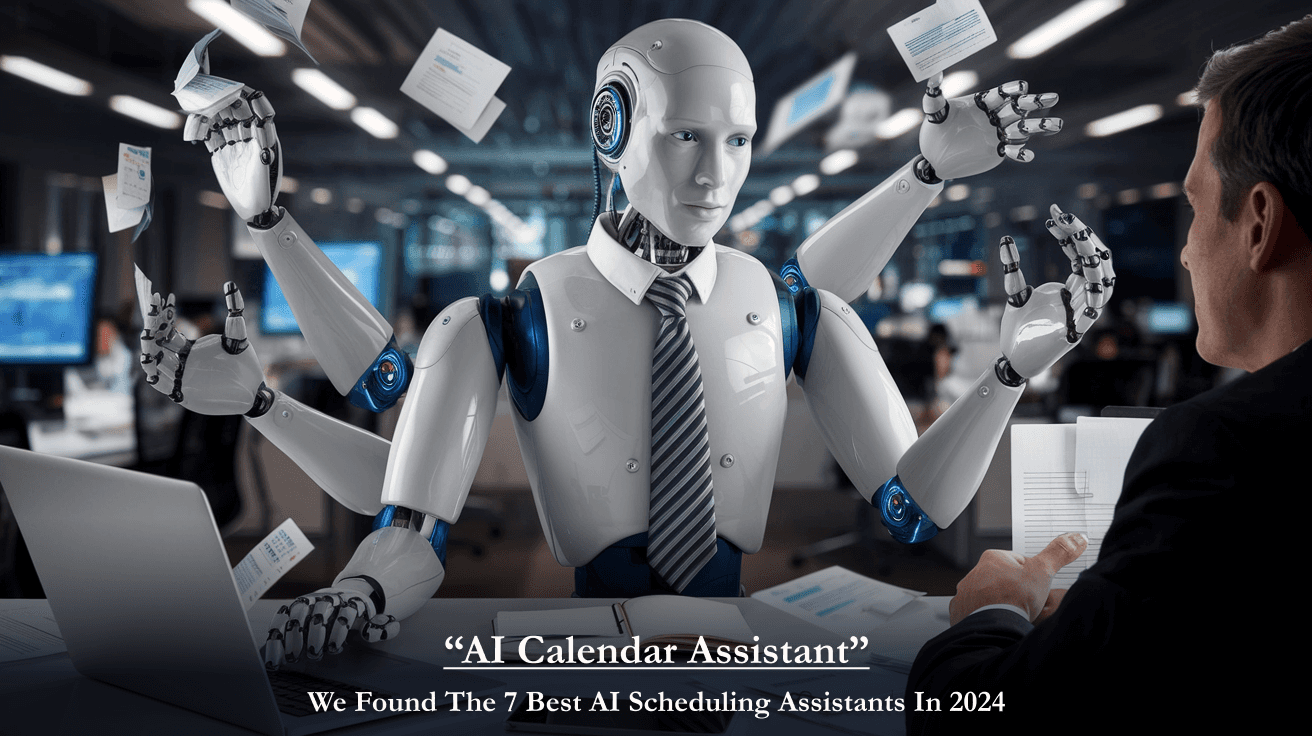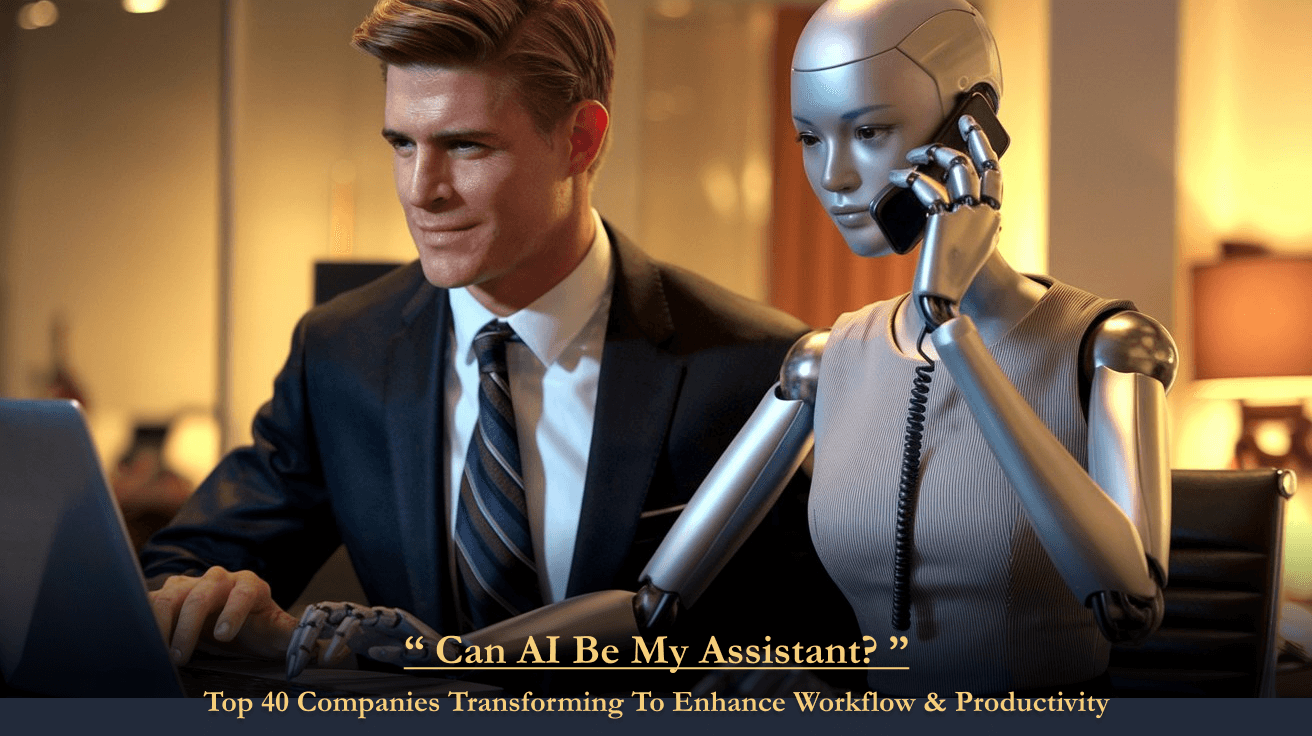18-Oct-2024
Use AI To Reclaim Focus - Avoid The Hidden Cost of Distractions
Dr. Adam Gazzaley, director of UCSF's Neuroscience Imaging Center, has spent decades studying what happens when our brains switch between tasks. What he's discovered is both surprising and sobering: our prehistoric neural architecture was designed for something other than modern work patterns. "When we interrupt a complex cognitive task," he explains, "we're not just pressing pause, we're dismantling neural networks that took minutes or hours to construct."
Each disruption triggers neurobiological events that create a cascade long after we think we have "slipped back into work." These neural aftershocks can persist for up to 47 minutes, adding up to what neuroscientists call "attention debt" - a cognitive deficit that accumulates throughout the day.
Some forward-thinking managers are now adopting AI-based solutions, like FastTrackr.AI, which track this cognitive overhead, filtering and prioritizing interruptions based on productivity patterns.
The Multitasking Myth
It's now proven that the human brain is not built for multitasking. MIT neuroscientist Earl Miller points out that "multitasking" is really just task-switching, and there’s a high cognitive cost to this behavior. His research shows that juggling multiple cognitive tasks can reduce productivity by up to 40% and temporarily lower IQ by 10 points - the same effect as pulling an all-nighter.
It gets worse: The Stanford Memory Lab has found evidence that chronic task switching can permanently alter brain structure. A study of knowledge workers revealed that frequent multitaskers had lower grey matter density in regions associated with emotional regulation and decision-making.
The Attention Economy: A Designed Distraction
This isn't a crisis - it's a design. The modern workplace is structured around what behavioral economists call "attention arbitrage": the systematic exploitation of human cognitive limits for short-term productivity gains. Each notification or context switch creates micro-profits for someone, somewhere, while shifting the cognitive burden onto individual workers.
This is why companies are implementing AI gatekeepers into existing communication channels. For example, integrating WhatsApp with FastTrackr.AI creates a "safe space" for deep work while maintaining accessibility.
The Biology of Deep Work
Recent advances in neuroimaging have shed light on why deep, focused work is both valuable and vulnerable. Once interrupted, the brain invokes a neural circuit called the "default mode network," essential for creative problem-solving and generating insights. But this network takes about 23 minutes to fully engage, while even a brief interruption can reset the clock.
Discovered by neuroscientist Dr. Marcus Raichle, the default mode network has been described as "the brain's most energy-hungry system." Reinstating this state after a disruption consumes significant cognitive resources, which could explain why knowledge workers often feel mentally drained after a seemingly "light" workday.
The Rise of Cognitive Protection
Forward-looking organizations are beginning to treat sustained attention as a scarce resource that must be actively protected. Some have started to create what neuroscientists call "attention architecture"—systematic approaches to managing cognitive load and safeguarding recovery periods.
AI assistants can be set up as cognitive shields that automatically manage routine tasks and communications during focused periods of deep work. Tools such as FastTrackr.AI are leading this approach, using complex algorithms to maintain productivity while protecting periods of deep focus.
A New Framework for Knowledge Work
The solution to our attention crisis isn’t more productivity - it's a fundamental change in how knowledge work is structured:
Acknowledge attention as a limited resource.
Protect cognitive recovery periods.
Systematically manage interruptions.
Integrate AI systems that respect cognitive boundaries.
Design workspaces that prioritize attention.
The Hidden Mathematics of Distraction
The data is startling. When Dr. Gloria Martinez of MIT's Digital Cognition Lab attached neural monitors to knowledge workers, she discovered something unprecedented: the average professional's brain enters and exits focused work states 37 times per hour. "It’s like watching someone try to read a novel while riding a mechanical bull," Martinez notes. "The cognitive whiplash is extraordinary."
Her experiments revealed that even minor interruptions can disrupt complex thought patterns for up to 47 minutes, more than twice what earlier studies suggested. These mini-interruptions have a cumulative effect, gradually eroding our ability to maintain focus over time.
Stanford neurobiologist James Liu refers to this as "attention debt," highlighting that constant context switching comes with a biological cost. After a decade of study, he found that "when we force our brains to rapidly shift between tasks, we’re not just losing time. We’re actually altering our neural architecture in ways that make deep focus increasingly difficult to achieve."
Liu’s research shows that chronic multitaskers have reduced grey matter density in regions responsible for emotional control and decision-making. "It’s like we’re conditioning ourselves to lose focus," he says. "And once our brains learn this, it becomes automatic."
How AI Can Help Regain Focus
Automated Reminders for Task Prioritization
One of the most significant benefits of AI tools is that they can automatically remind users and help them prioritize work. This means that professionals no longer need to check their calendars or emails constantly.
For example, FastTrackr.AI can send automatic reminders for upcoming meetings, ensuring you're always prepared without manually tracking each event. It can also organize reminders for follow-up emails or deadlines, minimizing the mental load of remembering every detail.
Managing Notifications to Minimize Interruptions
Notifications are one of the most significant sources of disruption in a professional's workday. While they are essential for staying updated, their constant intrusion can kill productivity.
AI tools can categorize and prioritize notifications based on their urgency. Custom notification settings allow users to filter out non-urgent messages during focus periods, creating uninterrupted time blocks for complex tasks.
Focus Mode and Pomodoro Technique Integration
Many AI tools offer focus modes to help professionals maintain concentration. These modes can block distracting apps and websites during set work intervals.
Use the Pomodoro Technique, working for a fixed period (e.g., 25 minutes) followed by a short break. This method encourages sustained focus and prevents burnout by promoting regular breaks - a strategy supported by productivity experts like Cal Newport in Deep Work.
Automating Routine Tasks to Free Up Mental Space
Routine tasks like drafting emails, scheduling meetings, and taking notes can consume a significant portion of a professional's time. AI tools like FastTrackr.AI can automate these activities, freeing up time for more strategic work.
David Allen, in his book Getting Things Done, emphasizes the importance of offloading routine tasks to create mental space for strategic thinking. AI tools embody this philosophy by handling the “busy work” and leaving executives free to focus on more complex objectives.
Analyzing Work Patterns for Optimal Focus
AI tools can analyze work patterns and suggest the best times for focus sessions based on individual productivity rhythms. This aligns with the insights from Daniel Pink’s When: The Scientific Secrets of Perfect Timing, which emphasizes the importance of working in harmony with your natural energy cycles.
AI can identify your most productive hours and recommend time slots for deep work, allowing you to schedule complex tasks when your focus is at its peak.
The AI Paradox: Fighting Technology with Technology
"We’re essentially building AI bouncers to protect us from other AI systems vying for our attention," says Dr. Martinez. But early results suggest this approach might be effective.
A study of 147 companies found that teams using AI-driven focus tools improved their complex problem-solving abilities by 34% and reported a 28% decrease in stress levels. "It’s not about removing technology," Martinez notes. "It’s about teaching it to respect the natural rhythms of human cognition."
The Future of Focus
As we stand at this cognitive crossroads, the stakes couldn’t be higher. "We’re not just fighting for productivity," says Liu. "We’re fighting for our ability to engage in the kind of deep, nuanced thinking that defines us as human beings."
Some companies are already reimagining their organizational structure around what experts call "attention-first architecture." This approach includes:
Cognitive Load Budgets: Tracking and limiting the number of context switches per day.
Deep Work Metrics: Focusing on the quality of thought rather than output quantity.
Attention Guardians: AI systems that proactively protect focus during periods of high cognitive intensity.
AI Is The New Hope
Distractions are an inevitable part of modern life, but they don’t have to define our workdays. Studies have shown that constant interruptions erode focus, slow progress, and lead to stress and burnout. With the rise of AI, especially tools like FastTrackr.AI, these challenges can become manageable.
By automating routine tasks, managing notifications, and analyzing work patterns, AI helps professionals regain control over their time and achieve their goals. In a world where every moment counts, AI is a crucial partner in helping professionals find their flow and thrive in their roles.
The battle for our attention may be the defining struggle of our time. But with the right tools, we can create a future where technology serves our cognitive needs rather than exploiting them.




